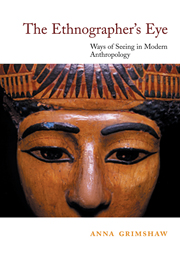Introduction
Published online by Cambridge University Press: 05 June 2012
Summary
Visual anthropology
There is a tribe, known as the ethnographic film-makers, who believe they are invisible. They enter a room where a feast is being celebrated, or the sick cured, or the dead mourned, and, though weighted down with odd machines, entangled with wires, imagine they are unnoticed – or, at most, merely glanced at, quickly ignored, later forgotten.
Outsiders know little of them, for their homes are hidden in the partially uncharted rainforests of the Documentary. Like other Documentarians, they survive by hunting and gathering information. Unlike others of their filmic group, most prefer to consume it raw.
Their culture is unique in that wisdom among them is not passed down from generation to generation; they must discover for themselves what their ancestors knew. They have little communication with the rest of the forest, and are slow to adapt to technical innovations. Their handicrafts are rarely traded, and are used almost exclusively among themselves. Produced in great quantities, the excess must be stored in large archives.
Eliot Weinberger's humorous stereotype gives expression to an image which I suspect is widespread in academic anthropology – that ethnographic film-makers are weighed down by technical encumbrances; that they produce large quantities of boring footage which show strange people doing strange things, usually at a distance; that they are theoretically and methodologically naive.
- Type
- Chapter
- Information
- The Ethnographer's EyeWays of Seeing in Anthropology, pp. 1 - 12Publisher: Cambridge University PressPrint publication year: 2001

